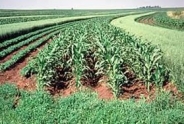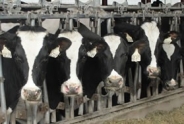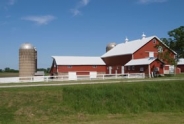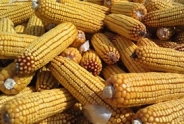Late Season Forage Considerations for 2025
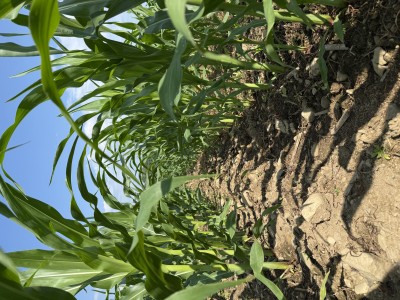
By Joe Lawrence
The challenges of the 2025 growing season continue with questions about adequate quantity and quality of forages to meet the needs of dairy herds in the coming year.
As we look for a strong finish to the growing season to alleviate some of these challenges it is important to assess your forage situation and take steps to meet the forage needs of the herd. There are a number of resources on the PRO-DAIRY Forage Management webpage that may be useful when working with your farm team on assessing your forage situation.
HAY CROPS
Weather challenges around first cutting resulted in large harvest of lower quality hay for some farms. Understanding the nutritional value of hay crops in inventory will be important to determining additional forage needs.
Focusing on high quality forages from remaining hay harvest and taking steps to store these higher quality forages in a way that will allow for their use for the right group of animals on the farm can alleviate some of the challenges for the lower quality first cutting.
At this point in the season, an August seeding of oats can provide additional tonnage of a high quality forage going into the winter months.
In looking ahead to next spring, planting additional acres of winter annual "cover crop" forages such as winter rye or triticale can provide additional high-quality feed early in the spring. In northern climates reliance on winter forages can be a challenge as spring weather conditions will play a major role in the feasibility of successfully harvesting these additional forage acres. Planning will be needed this winter to implement a plan for harvest that will not negatively impact the critical timing of other spring activities on the farm from manure spreading, to corn planting to first cutting.
CORN SILAGE
The variability of the corn crop will effectively create two different "cuttings" for some farms. To make the most of this challenging situation it will be important to consider storage and management options to best utilize the earlier corn which should be able to reach proper maturity with good nutritional value. The later corn, which may need to be harvested at an immature stage can still have value for certain groups of animals on the farm but needs to be managed separately.
In tracking corn silage progress and predicting approximate harvest timing, growing degree days (GDD's) can be helpful. The Cornell Climate Smart Farming website offers a useful growing degree calculator tool which can be used to retrieve growing degree day data for your exact location. With the user able to select the date to begin tracking. Using planting date or tasseling date can both be helpful for corn silage; however, it is important that other growing environment factors affect the corn crops ability to utilize GDD's and for this reason not all GDD's are create equal in advancing the crop. Utilize GDD's as an "early warning" system and then ground truth these estimates by visiting fields and staging the crop.
Corn silage that is harvest at an immature stage can also pose other challenges with storage. Consider impacts to your leachate collection system and work with your farm advisors on assuring best practices for building and managing bunk silos and piles.
GRAIN CROPS FOR FORAGE
Late planted corn originally intended for grain may not make it may be an option for additional corn silage. Recognizing that in these cases this may still result in immature corn silage, the same considerations above should be considered. It is very difficult to price immature corn silage.
There are numerous strategies for pricing standing forages, all with their advantages and disadvantages. Ultimately, the buyer and seller need to arrive at what they feel is a fair price based on the feed value of the crop and potential alternative uses. One very simple but effective approach for pricing "normal" corn silage standing in the field is multiplying the market price per bushel of corn by a factor of seven or eight to determine a price per wet ton of corn silage. This would be for a silage with a dry matter content in the mid-30's. Prices should be adjusted for silage that is significantly wetter. When addressing immature corn silage, again strategies vary but discount factors of 10 to 20 percent of often used off the price of the "normal" corn silage to account for the lower starch content and other potential challenges with storing and managing the immature corn.
Upcoming Events
Memoir Reading: Barn Gothic
December 4, 2025
Bath, NY
Barn Gothic is an elegy for family farmers and an intimate portrait of three generations laboring to be fathers and sons while their livelihood falls apart. Beautifully told with a farmer's restraint and a poet's grace, it is a story of personal loss amid corporate corruption and of finding a way forward when everything you know disappears.
NY Small Farms Summit 2025: Stronger Together
December 5, 2025
Alfred, NY
We hope you will join us on December 5th for the 2025 New York Small Farms Summit! This is an opportunity to meet other farmers and ag supporters, learn about research and education projects, and set priorities for future efforts to grow small farm success.
At the Allegany County site, we will focus on giving trees a chance and how trees build resiliency on small farms. Whether attracted to fruit, nuts, vegetables, fodder or shade, trees can be an integral part of a successful farming system. Join us as we explore the opportunities for resiliency that come from adding tree crops or managing wooded areas of your farm for agroforestry or silvopasture systems.
Crops, Cows & Critters - Southwest New York Dairy, Livestock & Field Crops Newsletter Sponsorship
December 19, 2025
Our two forms of publications feature research-based and timely information from our four specialists, listed to the right, along with local event notifications and Cornell University outreach. This information is provided to participants who range from dairy, livestock, and field crops producers to agricultural suppliers and consultants.
Weekly Email Update: Shared with 625+ households who have signed up with our program.
Monthly Paper Mailer: To reach our stakeholders and farmers who lack internet access, we send out a monthly mailer where your company's logo and contact information would be featured with a mailing list of 330+ households.
If you sponsor our weekly and monthly publications you reach approximately 955 households.
Visit our website to view our newsletters!
Announcements
No announcements at this time.

